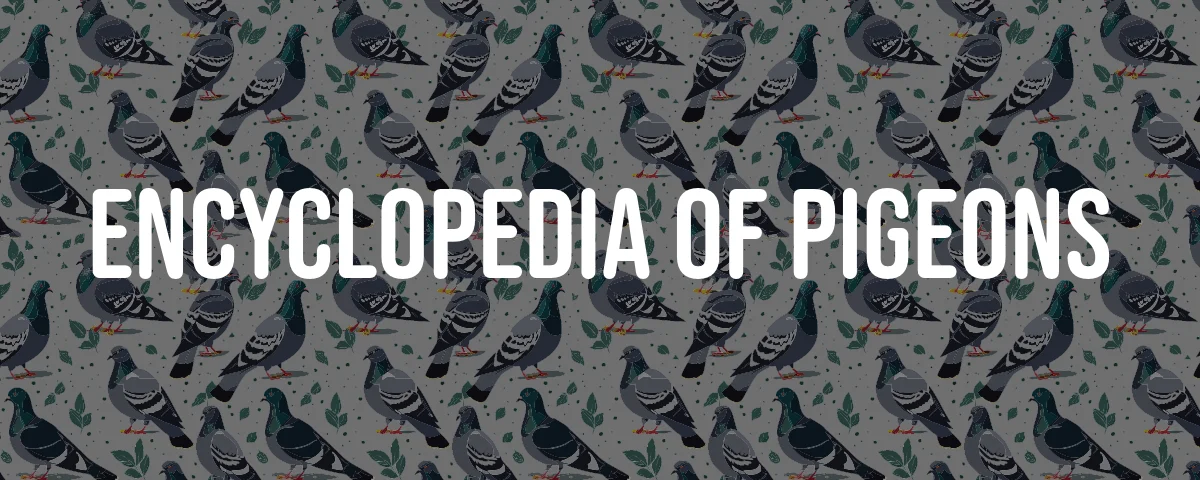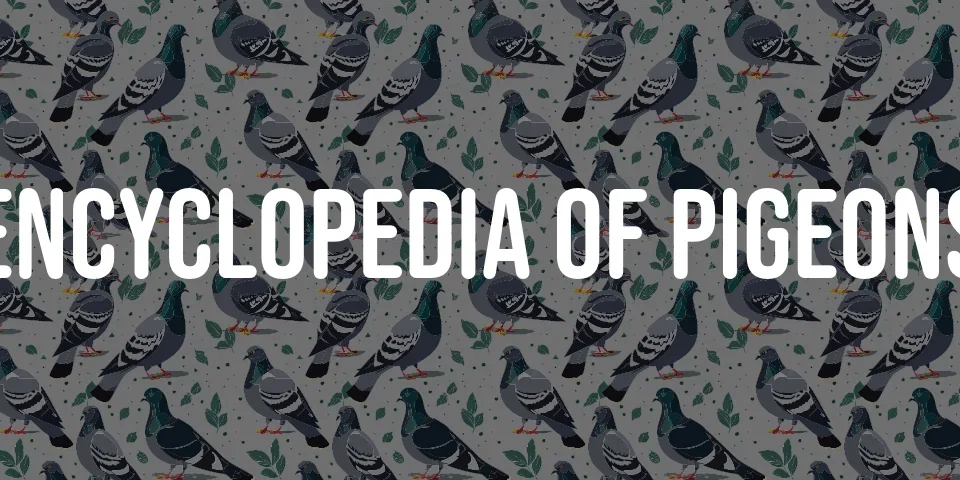Introduction to Brunner Pouter
There are pigeons, and then there are Brunner Pouters—the sort of bird that makes you stop and stare, even if you thought you’d seen it all in the world of feathers. Born from the ancient stones and winding streets of Brno, nestled in the heart of what’s now the Czech Republic, the Brunner Pouter is no ordinary member of the fancy pigeon club. Think of it as a living sculpture, a marvel of avian engineering, crafted through generations of breeders obsessed with a single, quirky feature: a chest that balloons out with all the self-assurance of a dandy at a masquerade. Descended from the humble rock pigeon, this breed has become a darling among enthusiasts, not just for its looks but for its entire presence—a blend of elegance and eccentricity that’s hard to resist.
Origin and History
Picture a group of pigeon fanciers in old Brno, poring over their birds like Renaissance artists eyeing a block of marble, each with a vision of what could be coaxed out of nature. Over years—decades, even—these breeders selected and refined, choosing birds that could puff up their chests to near-comic proportions, stand as straight as sentinels, and carry themselves with the kind of sophistication you’d expect at a Viennese ball. The result? A breed that’s more than just a pretty face: a tiny, living monument to obsessive patience and the peculiar joys of selective breeding. Soon enough, these birds were stealing the show at competitions, turning up everywhere from rural fairs to grand European exhibitions, their reputation ballooning right alongside their crops.
- chest inflation taken to an art form,
- a posture that could teach a ballet dancer a thing or two,
- and a silhouette that somehow manages to be both statuesque and delicate.
That’s how the Brunner Pouter strutted into the limelight of the pigeon world—and never really left.
Classification and Types
Find yourself at a pigeon show in the United States, and you’ll hear the Brunner Pouter spoken of in reverent tones as a “fancy pigeon”—a label that hardly does it justice. Cross the Atlantic, and in Europe, it’s classified within the Pouter and Cropper group, a kind of exclusive club for birds who make inflating their chests look like high art. These aren’t your average city pigeons picking at crumbs—the Brunner Pouter is bred to be seen, admired, and, ideally, to win rosettes.
- that upright posture: unmistakable,
- that globe-like chest: the envy of the avian world,
- that slender, almost architectural form: impossible to ignore.
After generations of careful refinement, these qualities have become so pronounced that even a casual observer can spot a Brunner Pouter from across a crowded hall.
Physical Characteristics
Let’s be honest: if the Brunner Pouter were a person, it’d be the smallest one in the room—but also the one everyone’s talking about. Despite its compact size—the tiniest among the pouters—this bird carries itself like it owns the place. Its bones seem spun from glass, but its posture is pure steel. That rounded head? Picture a cameo silhouette from a 19th-century portrait. Watch one for a while, and you’ll notice a gentle, almost courtly temperament—like a character out of a Tolstoy novel, endlessly charming to those who pay attention.
And there’s more: Brunner Pouters come dressed for the occasion, adorned in an array of colors and patterns that would put a fashion week runway to shame. Each bird is a testament to the painstaking dedication of breeders—each feather, each hue, a nod to the endless quest for perfection.
Distinctive Features of Brunner Pouter
It’s one thing to say a bird is beautiful; it’s another to watch a Brunner Pouter strut across the judging table. There’s an almost theatrical flair to its presence: a rotund, compact body perched atop spindly, elegant legs; a neck so short you’d miss it if not for the globe of feathers that seems to float above the chest. The way it stands—erect, almost defiant—calls to mind royalty, or perhaps a top-hatted actor ready to take the stage.
But here’s the twist: for all its looks, this is a bird with a gentle soul. It’s as sociable as a pub regular, curious and calm, and just as likely to charm a novice as it is to win over a seasoned pigeon fancier. It’s this blend of beauty and character that keeps the Brunner Pouter in the limelight wherever pigeon people gather.
Elegant Appearance and Upright Stance
You haven’t really seen a pigeon until you’ve seen a Brunner Pouter in profile—sleek, elongated, the tail just tipping past the end of the wings like a dash of flair on a signature. The silhouette is so balanced, it’s as if the bird spent years studying sculpture before stepping into the world. It isn’t just upright; it’s upright with attitude, carrying an air of quiet confidence that’s hard to imitate.
Coloration and Markings
The Brunner Pouter’s wardrobe is a riot of color: glossy black, fiery red, luminous yellow, deep blue, and the mysterious isabel—a hue somewhere between antique lace and old parchment. Add white bars for good measure, and you have a bird as visually dynamic as any contemporary painting.
- black white bar: bold as a tuxedo,
- stork marked: as if dipped in a painter’s palette,
- tigered: for those who prefer a little wildness in their art.
At shows, the scrutiny is intense. Judges, part scientist and part aesthete, pore over every feather, every shade, every line—seeking not just color, but depth, richness, and the elusive precision that comes from generations of careful breeding.
Temperament and Behavior
Spend time with a Brunner Pouter, and you’ll find a character somewhere between a mischievous child and a polite diplomat. They’re lively, but their antics never cross into chaos. Watch them in the loft, mingling with their peers, and you sense an atmosphere of gentle camaraderie—a flock that gets along as well as any close-knit family. For the beginner, they’re approachable; for the expert, endlessly fascinating. They’re the kind of bird that makes you linger just a bit longer than you planned.
Popularity and Recognition
Some breeds fade into the background, but the Brunner Pouter has staked its claim in the heartlands of Germany and Czechoslovakia, places where pigeon keeping is not just a hobby but a cultural inheritance. Here, these birds are more than pets; they’re cherished symbols on par with regional pastries or folk songs.
- admired for their looks,
- coveted by exhibitionists (of the avian kind),
- and the pride of breeders with reputations to uphold.
Their value isn’t just measured in trophies, but in the stories told, the lineages traced, and the rivalries sparked at every annual show.
Popularity in Germany and Czechoslovakia
To grasp the Brunner Pouter’s status in these countries, you have to dive into a world where pigeon clubs are as common as football teams and the rivalry just as fierce. In exhibition halls from Berlin to Bratislava, Brunner Pouters are the head-turners, the crowd-pleasers. Breeders here are as much craftspeople as competitors, working year after year to perfect birds that can outshine all others under the bright competition lights.
European Standardization and National Pigeon Association
In Europe, standards are everything. There’s an almost bureaucratic poetry to the way pigeon associations set out their rules—every curve of the globe, every angle of a wing, codified and measured. The National Pigeon Association doesn’t just keep a registry; it shapes the very future of the breed, laying down the criteria on which every bird will one day be judged.
- color: must dazzle yet stay true,
- markings: as crisp as a military uniform,
- physical build: a balance of strength and elegance.
These standards don’t just create winners—they create legends, birds everyone talks about long after the show is over.
Show Pigeons and Competitive Keeping
Judging a Brunner Pouter isn’t for the faint of heart. Imagine sizing up a bird by the curve of its throat, the sheen of its legs, the symmetry of its globe—each detail scrutinized, scored, and compared to an ideal that exists only in the collective imagination of breeders. The 100-point scale is merciless, but it’s also what drives breeders to keep pushing, year after year, for that elusive perfect bird. In this world, elegance isn’t just admired—it’s demanded.
Brunner Pouter in Pigeon Fancier Communities
Among pigeon fanciers, the Brunner Pouter is more than a breed—it’s a shared passion, a kind of living conversation that stretches across borders and generations. Breeders swap stories, tips, and the occasional boast in clubhouses or online forums, always with one eye on the next exhibition. It’s a collaborative, competitive, and sometimes downright obsessive community, but one where the Brunner Pouter reigns as the bird everyone wants to talk about.
The true magic happens in the exchange of knowledge: how to refine that upright stance, how to coax out the richest hues, how to keep a flock harmonious. These aren’t just technical discussions—they’re the lifeblood of the fancy pigeon world, the glue that binds a community together.
And then there are the gatherings: competitions, exhibitions, informal loft visits where everyone wants a peek at the latest stunners. Camaraderie grows out of shared victories and setbacks, the collective pursuit of beauty and excellence.
Role in Pigeon Genetics
The Brunner Pouter is more than just eye candy; it’s a genetic powerhouse. Breeders use these birds like paintbrushes, adding a touch of elegance and structure to other lines, fine-tuning body shape, feather texture, and posture in their quest for ever-more-perfect pigeons. The Brunner’s signature abilities—like that jaw-dropping crop inflation—aren’t just for show, but tools for shaping the next generation of fancy birds.
- body form: redefined,
- feather color: intensified,
- structure: honed to near-mathematical precision.
Genetic variety is the secret sauce, and the Brunner Pouter is a favorite ingredient.
Engagement with Pigeon Lovers
It’s not all about ribbons and points. The joy of Brunner Pouters is also in the everyday: the morning feedings, the soft cooing in the loft, the quiet satisfaction of watching a particularly striking bird strut its stuff. Within fancier circles, there’s a constant back-and-forth of advice, from breeding strategies to loft management to the fine art of preparing a bird for its moment in the spotlight.
- care tips are swapped like family secrets,
- breeding notes are guarded but sometimes shared with a wink,
- and the pride of showing off a well-turned-out Brunner is universal.
It’s a community defined by both competition and kinship—an odd but endearing mix.
Pigeon Loft Management
Forget the image of pigeons crowded into dusty corners. For Brunner Pouters, the loft is a palace—clean, airy, and meticulously organized. Waste is banished daily, the air is fresh, and the perches are just right. Nutrition is a science: grains (millet, maize, wheat) blend with greens (spinach, carrots) in a daily menu worthy of a health spa. Clean water is a non-negotiable, and grit, that unsung hero, keeps digestion humming.
And then there’s the social aspect: enough space so tempers don’t flare, nesting boxes perfectly sized, and a flock dynamic that allows the Brunners’ personalities to shine. The result? Birds that are not just healthy, but positively flourishing.
- nesting boxes tailored to perfection,
- room to preen and parade,
- stress kept at bay through thoughtful design.
Breeding Brunner Pouters
Breeding these birds isn’t for the lazy or the fainthearted. It’s an exercise in patience and precision, an ongoing battle with genetics, fate, and the occasional bout of bad luck. Every year, breeders pair birds to chase that elusive combination: size, color, and most importantly, the crop inflation that has become the breed’s calling card. The challenge? Getting all this without sacrificing the delicate bone structure that gives the Brunner Pouter its poise.
There’s an artistry to it—one part genetics, one part gut instinct, and one part sheer stubbornness. The goal is always the same: birds that not only meet the breed standard, but somehow, impossibly, surpass it.
- body form must be just so,
- color deep and unblemished,
- the overall effect: pure elegance on two legs.
Every new clutch is a gamble, every fledgling a potential star—or a lesson in humility.
Common Breeding Standards
The ideal Brunner Pouter is written into the very DNA of the breed, but getting there is another matter. Breeders seek that perfect blend: an upright, graceful body; feathers that feel smooth as silk; and colors so rich they almost glow. The competition is fierce—judges are ruthless, examining every feather for flaws, every pattern for irregularity.
Color is the showstopper—deep, clear, and consistent. Patterns must be sharp, never muddled. The only way to achieve this? Relentless selection, with an eye always on the future, never settling for “good enough.”
Breeding Challenges and Patience
Ask a breeder about the hardest part of working with Brunner Pouters, and you’ll get a wry smile. Genetics, after all, has a wicked sense of humor. One year you get a clutch of beauties; the next, a flock of oddballs. The trick is to balance the urge for uniformity with the need for genetic diversity—the tightrope walk between inbreeding and the chaos of too much variation.
Patience isn’t just a virtue; it’s a job requirement. Breeders spend years, sometimes decades, perfecting a line, all while watching for health problems and the subtle signs that something, somewhere, has gone awry.
- careful stock selection,
- preserving signature traits,
- guarding against inbreeding,
- pursuing color and form,
- constant vigilance for emerging health issues.
Breeding Brunner Pouters isn’t just a hobby—it’s an epic saga, with victories, setbacks, and the occasional act of pigeon-related heroism.
Bloodlines and Master Breeders
Behind every great Brunner Pouter stands a master breeder—someone who has spent a lifetime learning the subtle language of feathers and posture. Names like Eugen Krampen are whispered with respect in breeding circles, their work a blend of science, intuition, and artistry.
These breeders are alchemists, pairing birds with the precision of chess grandmasters, always seeking that next leap forward. Their successes aren’t just measured in trophies, but in the health and diversity of their lines.
- birds that dominate at shows,
- bloodlines that avoid the pitfalls of genetic stagnation,
- traits preserved and refined beyond what seemed possible.
It’s a legacy measured not just in birds, but in the admiration of a global community.
Health and Care of Brunner Pouters
There’s a saying among pigeon keepers: a healthy loft is a happy loft. Nowhere does that ring truer than with Brunner Pouters, whose delicate frames and demanding standards make care an ongoing project. Cleanliness is non-negotiable—waste swept out daily, perches scrubbed, and air circulating just enough to keep things fresh but not drafty.
Diet is another obsession. These birds dine on a carefully balanced blend of grains—millet, wheat, maize—topped with fresh greens. Water? Always spotless. Grit is the secret ingredient, aiding digestion and keeping birds in top form.
Regular checkups are a must. The tiniest change in behavior—a drooped wing, a missed meal—can signal trouble brewing. Breeders keep a vigilant eye, not just on illness, but on inherited quirks that could threaten the breed’s future.
Social life matters, too. Brunner Pouters are flock creatures, happiest among their own, with nesting spaces designed to let their instincts play out. Every aspect of care is a nod to their complex needs—and a testament to the dedication of their keepers.
Physical Health and Flight Capability
Flying is in a pigeon’s blood, and even the most pampered Brunner Pouter needs to stretch its wings. Health checks are routine, but never so routine that they can be taken lightly. The diet, again, takes center stage; grains, greens, and grit form the holy trinity, while water keeps everything running smoothly.
A well-managed loft is like a five-star hotel: stress is minimized, illness kept at bay, and every bird gets the space and air it needs. Ventilation is crucial—not just for comfort, but for the lungs, the engine of every good flyer.
Keep an eye out for anything off: a bird sitting alone, a change in flight pattern. Early intervention marks the difference between a minor setback and disaster.
Common Faults and Ethical Considerations
Perfection comes at a price, and the Brunner Pouter’s distinctive features sometimes bring baggage: weak crops, awkward bodies, or postures that don’t quite measure up. Worse, health can suffer—fragile lungs, genetic oddities born of too much inbreeding, and the constant threat of fashion overtaking function.
Ethics matter. The best breeders know when to pull back, when to put health above aesthetics. Inbreeding is a tempting shortcut, but a dangerous one. The real mark of a master is a flock that’s both beautiful and robust.
- avoiding genetic bottlenecks,
- keeping the flock’s environment spotless,
- feeding for health as much as for shine,
- and being unafraid to cull lines that don’t meet ethical standards.
Ultimately, the Brunner Pouter isn’t just a showpiece—it’s a living testament to the balance between art and responsibility. And perhaps that’s what makes it so captivating—imperfections, quirks, and all.






